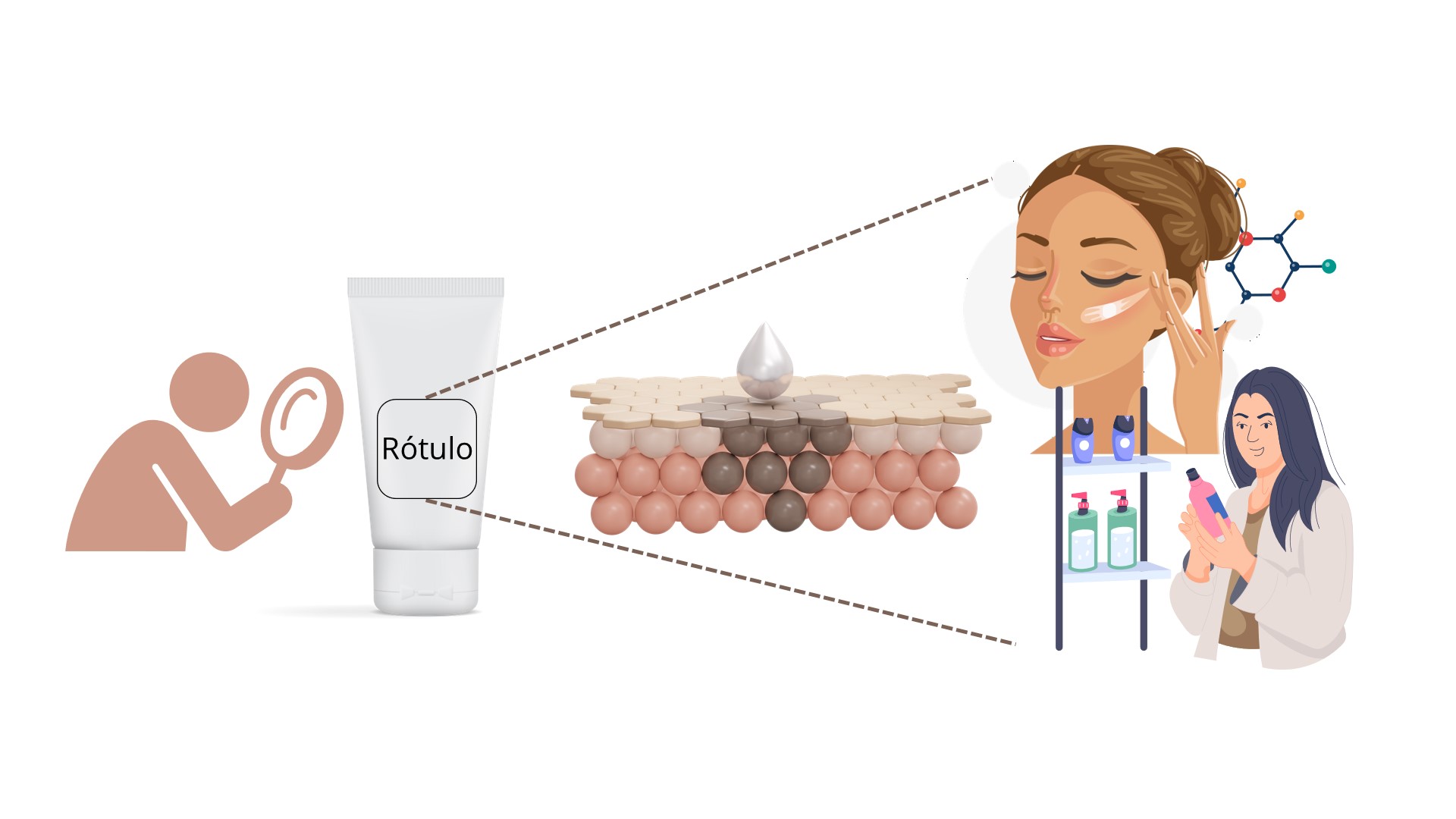Resumo
A hiperpigmentação da pele, principalmente na região facial, resulta em um incômodo estético que afeta a qualidade de vida do indivíduo, levando a busca por produtos clareadores. Este estudo avaliou a conformidade dos rótulos de cosméticos comercializados como “produtos clareadores de pele”, bem como a existência de substâncias clareadoras proibidas neste tipo de produto. Foi realizada uma análise transversal descritiva qualitativa no período de abril a maio de 2022, em busca por cosméticos comercializados em estabelecimentos farmacêuticos e lojas de produtos cosméticos localizadas no município de Juazeiro/BA. Foram selecionados 18 produtos e os desvios de rotulagem identificados com base na legislação utilizada vigente à época do estudo, foram: ausência de informações sobre advertências/restrições de uso e número de registro incompleto, equivalente a 16,7% (n = 3) das amostras. A hidroquinona, proibida nesse tipo de produto, foi encontrada em um cosmético (5,5%). Embora a maioria das amostras analisadas esteja em conformidade com as exigências legais, os resultados evidenciam descumprimentos, indicando a necessidade de uma fiscalização mais rigorosa a fim de evitar possíveis danos à saúde do usuário.
Referências
1. Chen Q, Kou L, Wang F, Wang Y. Size-dependent whitening activity of enzyme-degraded fucoidan from Laminaria japonica. Carbohydrate Polymers. 2019;225:115211. https://doi.org/10.1016/j.carbpol.2019.115211
2. Kim S, Seo H, Mahmud HA, Islam MI, Sultana OF, Lee Y et al. Melanin bleaching and melanogenesis inhibition effects of Pediococcus acidilactici PMC48 isolated from korean perilla leaf kimchi. J Microbiol Biotechnol. 2020;30(7):1051-59. https://doi.org/10.4014/jmb.2003.03007
3. Gillbro JM, Olsson MJ. The melanogenesis and mechanisms of skin-lightening agents - Existing and new approaches. Int J Cosmeti Sci. 2011;33(3):210-221. https://doi.org/10.1111/j.1468-2494.2010.00616.x
4. Sanadi RM, Deshmukh R. The effect of Vitamin C on melanin pigmentation – A systematic review. Journal of Oral and Maxillofacial Pathology. 2020;24(2):374. https://doi.org/10.4103/jomfp.jomfp_207_20
Guerrero D. Prise en charge dermo-cosmétique des hyperpigmentations. Ann Dermatol Venereologie. 2012;139(3):S115-S118. https://doi.org/10.1016/S0151-9638%2812%2970121-7
6. Ministério da Saúde (BR). Agência Nacional de Vigilância Sanitária. Resolução RDC nº 752, de 19 de setembro de 2022. Dispõe sobre a definição, a classificação, os requisitos técnicos para rotulagem e embalagem, os parâmetros para controle microbiológico, bem como os requisitos técnicos e procedimentos para a regularização de produtos de higiene pessoal, cosméticos e perfumes. Diário Oficial da União. Brasília, DF, 21 set 2022. Seção 1(180):177-81.
7. Ministério da Saúde (BR). Agência Nacional de Vigilância Sanitária. Resolução RDC nº 529, de 04 de agosto de 2021. Dispõe sobre a lista de substâncias que não podem ser utilizadas em produtos de higiene pessoal, cosméticos e perfumes s e internaliza a Resolução GMC MERCOSUL nº 62/14, alterada pela Resolução GMC MERCOSUL nº 37/20. Diário Oficial da União. Brasília, DF, 11 ago 2021. Seção 1(151):101-18.
8. Katsambas AD, Stratigos AJ. Depigmenting and bleaching agents: coping with hyperpigmentation. Clin Dermatol. 2001;19(4):483-8. https://doi.org/10.1016/s0738081x(01)00182-1
9. Saade DS, Maymone MBC, Secemsky EA, Kennedy FK, Vashi NA. Patterns of over-thecounter lightening agent use among patients with hyperpigmentation disorders: a united states-based cohort study. J Clin Aesthet Dermatol. 2018;11(7):26-30. Disponível em: https://www.ncbi.nlm.nih.gov/pmc/articles/PMC6057735/
Ministério da Saúde (BR). Agência Nacional de Vigilância Sanitária. Resolução RDC nº 7, de 10 de fevereiro de 2015. Dispõe sobre os requisitos técnicos para a regularização de produtos de higiene pessoal, cosméticos e perfumes e dá outras providências. Diário Oficial da União. Brasília, DF, 11 fev 2015. Seção 1(29):39-43.
11. Presidência da República (BR). Casa Civil. Lei nº 6.360, de 23 de setembro de 1976. Dispõe sobre a vigilância sanitária a que ficam sujeitos os medicamentos, as drogas, os insumos farmacêuticos e correlatos, cosméticos, saneantes e outros produtos, e dá outras providências. Diário Oficial da União, Poder Executivo, Brasília, 23 set. de 1976. Seção 1:12647.
12. Rito PN, Presgrave RF, Alves EN, Bôas MHSV. Perfil dos desvios de rotulagem de produtos cosméticos analisados no Instituto Nacional de Controle de Qualidade em Saúde entre 2005 e 2009. Vig Sanit Debate. 2014;2(3):44-50. https://doi.org/10.3395/vd.v2n3.199
13. Jeon JS, Kim HT, Kim MG, Oh MS, Hong SR, Yoon MH et al. Simultaneous determination of watersoluble whitening ingredients and adenosine in different cosmetic formulations by high-performance liquid chromatography coupled with photodiode array detection. Int J Cosmet Sci. 2016;38(3):286-93. https://doi.org/10.1111/ics.12292
14. Ribas J, Schettini APM, Cavalcante MSM. Exogenous ochronosis hydroquinone induced: a report of four cases. An Bras Dermatol. 2010;5(85):669-703. https://doi.org/10.1590/S036505962010000500017

Este trabalho está licenciado sob uma licença Creative Commons Attribution 4.0 International License.
Copyright (c) 1969 Amanda Santana Gomes, Raquel Deodato Silva Rodrigues, Joyce Kelly Marinheiro da Cunha Gonsalves
